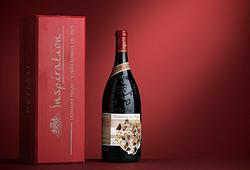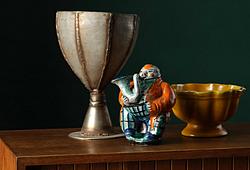VAS, porslin. Qingdynastin med Xianfengs sex karaktärers märke och period (1851-1861).
Päronform, svagt utvikt fot, avsmalnande hals med utvikt mynning. Målad dekor av bambu och bananträd i trädgård. Höjd 28,5 cm.
Proveniens
From a private Swedish Collection.
Litteratur
For the prototype of this vase see one attributed to the Yongle period, in the Palace Museum, Beijing, illustrated in The Complete Collection of Treasures of the Palace Museum. Blue and White Porcelain with Underglazed Red (I), Hong Kong, 2000, pl. 33; and another attributed to the Xuande period, also in the Palace Museum published in Yeh Peilan, Appraising Ancient Chinese Ceramics, Taipei, 1994, pl. 83. While in shape and decoration Qing examples are undoubtedly inspired by Ming dynasty pieces, the brushwork and painting style in these later examples are much more detailed and fine, with the cobalt blue also of brighter tone. The neck has also become wider and the body of more bulbous profile in the Qing period.
2010, lot 2773.
Compare the Xianfeng-marked vase, illustrated in The Complete Collection of Treasures of the Palace Museum - III - Blue and White Porcelain with Underglaze Red, Hong Kong, 2000, p. 167, no. 153. See, also, the Xianfeng-marked example sold at Christies, London rooms, 12 July 2005, lot 171.
Övrig information
The landscape design seen on this magnificent vase originated in the early Ming dynasty when this combination of motifs became popular amongst the literati for its auspicious connotation. Bamboo represents longevity, endurance and loyalty as it remains green in winter and does not break easily in the wind; while the plantain tree is the symbol of education. Classical legends tell the tale of a scholar who wrote on plantain leaves as he was too poor to afford any paper. Rocks stand for durability and steadfastness, and are generally associated with reliability and friendship.



















































